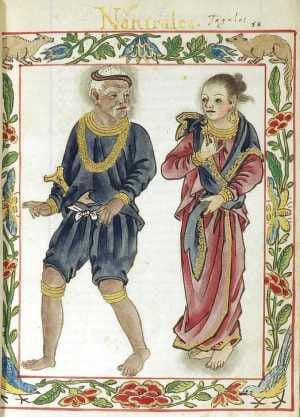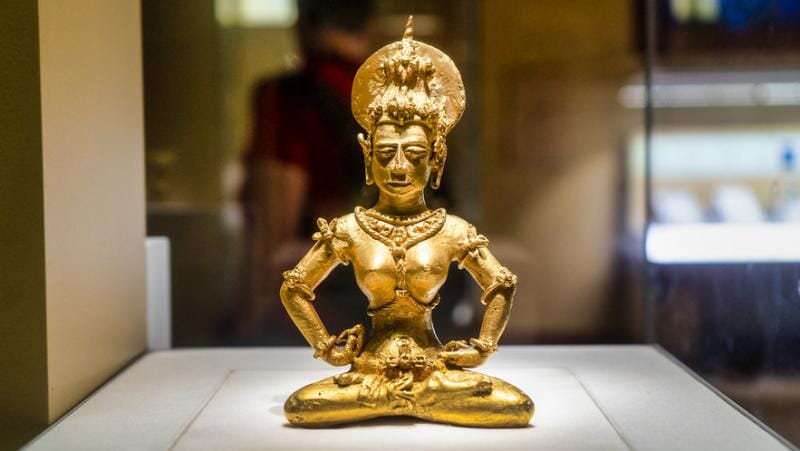The 3 Meanings of Maharlika
Table of Contents
Maharlika was the name of the pre-colonial confederation based in the city of Manila.
- Maha means great, such as Maharashtra and Mahabharata. It adds r when it is conjugated
- Lika either means:
- creation from Tagalog “likha” which in Sanskrit means to draw or paint
- cup in Sanskrit, made up of la (cup) ika (small, feminine)*
Maharlikanism Note
Therefore, Maharlika means “a country where great things come from or are created.”
This is very different from the meaning of the “Philippines” which means subjects of King Philip II of Spain.
- His Hapsburg family line had genetic diseases resulting from inbreeding
- His religious policies were very intolerant
- His reckless spending pushed his Spanish Empire into debt
His attributes are neither creative nor noble. So to upgrade the qualities and attributes of the country, we clearly have to abandon the name “Philippines”.
This leads us to the question: Why did the original Maharlika name have different meanings?
Meaning 1: Maharlika as Freedom
The Heart of Maharlika was Manila which was then known by the Song dynasty as Ma-yi, from their pronunciation of “May-nila”.
Nila means blue in Sanskrit which was used by the free citizens to distinguish themselves from the rest of society. This was opposed to slaves and to the ruling class which wore red.
| Class | Description | Indian |
|---|---|---|
| Nobility or Maginoo | Means “having dignity”, led by a datu who wore red and gold | Vaeshya |
| Free men or Maharlika or Timawa | Means “in peace or freedom”, wore blue | Ksattriya |
| Babaylan | Priest caste | Brahmin |
| Indentured servants or Aliping Namamahay | Means slaves within the house | Shudras |
| Slaves or Aliping Sagigilid | Means slaves “on the sides” who were naked with only “bahag” | Shudras |
May-nila therefore means “having freedom”. This interpretation makes it easy to confuse it with the Indonesian word merdeka.

Meaning 2: Maharlika as Warrior Class
The free citizens were tasked with defending the lands that were ruled by the nobility.
Maharlikanism Note
This allowed relative peace and security compared to other parts that did not have such a class system.
This is consistent with both Chau Ju Kua and William Dampier describing Manila as a place which pirates did not raid.
Pirates seldom come to this country [Ma-i].
Chau Ju Kua
Chun Fan Chi

In fact, the Maharlikans were tapped by the King of Brunei to force parts of Borneo and Java to submit.
Brunei is a large city with a very large bay.. many canoes, in number 260, were equipped to capture us and came upon us. When we saw them, we left hurriedly, and sailed out of the bay, whereupon we saw some junks coming.
We went to them and captured one, in which was a son of the king of Luzon.
Antonio Pigafetta
This then led to the word Maharlika being associated with the warrior class. It’s similar to the word “Spartan” being associated with tough soldiers, meagre lifestyle, simplicity, low-maintenance, etc.
Meaning 3: Maharlika as Nobility
The free citizens were tasked with serving the ruling class not only in defense, but also in the harvesting of crops and the production of ships. This created a close association between them.
Rakta means red in Sanskrit which was used by the nobles and ruling class. This is why Maragtas is a story of how some rulers of Borneo moved into Panay island and Southern Luzon.

Timawá signifies now in Tagál: ‘in peace, quietness, tranquil, free’, etc. Maginoo, from the root ginoo, ‘dignity,’ is now the title of the chiefs.
The chief’s reunion is called ‘kaginoóhan’. Colin says that the Chiefs used the title ‘gat’ or ’lakan’, and the women ‘dayang’.
The title of ‘mama’ applied now to men, corresponds to ‘uncle, Señor, Monsieur, Mr,’ etc. and the title ‘al’ to women
This association with the nobles, as well as the blue color, led to Maharlika being understood nowadays as noble or blue-blooded.
How Buddhism Led Us to Maharlika
When we were in university, we agreed that Catholicism had too many contradictions, while Islam was quite constrictive. And so we tried Buddhism, which then is closely connectted to Hinduism, Yoga, and Sanskrit.
Filipino Buddhists say that Buddhism was the original religion of Precolonial Philippines. This has been proven by the Golden Tara Statue in Agusan near Butuan. Magellan held his first mass in Masawa in the kingdom of Butuan. This was the start of our quest.

Historian William Henry Scott mentions the Kingdom of Butuan from Chau Ju Kua who mentions Ma-i as its owner. Historians who are ignorant of Sanskrit will say that Ma-i is Mindoro. But this doesn’t make sense because:
- Mindoro had no Kingdom
- The Mindoro ports of Calapan and Puerto Galera are incapable of handling world trade with big ships
The only Kingdom with Ma-i in its phonetics is “Maynila”:
- Manila had a Kingdom of Tondo
- Manila has an excellent port in Manila bay which could easily handle world trade, as evidenced by its modern port containerization
We learned a bit of Sanskrit, thanks to our shift to Hindu-Buddhism. We know that “nila” means “blue”. And so, may-nila combines:
- the Tagalog “mayroon” (to have) and
- the Sanskrit nila
This leads to “having blue” which was then applied to Luzon, Visayas and Mindanao, as noted by Chau Ju Kua.
Switching to Buddhism helped us connect the dots naturally by sensing the latent Maharlikan vibration that still lingers beneath the colonial impositions of Spain and the US.
The Real Historical Meaning of Maharlika
From the original Sanskrit, we can fix those confused meanings and settle on our earlier definition as a country where great things come from or are created.
Among those great things are nobility, freedom, and martial skill that is not forced, but naturally developed. In this way, our definition fairly absorbs those 3 definitions.